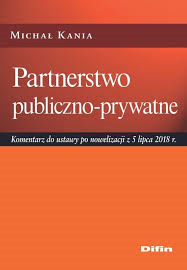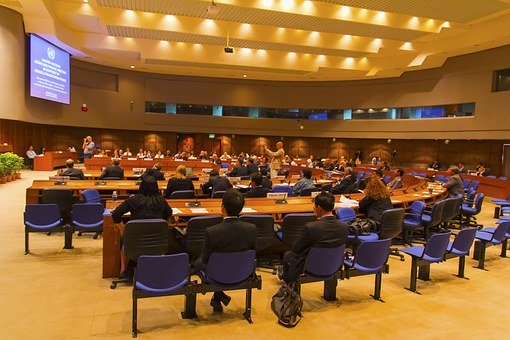Public Procurement and COVID-19 in Poland. ''COVID-19 Act'' with subsequent amendments.

Polish regulations concerning COVID-19 and public procurement encompass main three groups of legal provisions:
- first the special regulation stipulated in Article 6 section 1 of the Act on special arrangements for preventing, counteracting and combating COVID-19 (the “COVID-19 Act”), other infectious diseases and the crisis situations they cause of 2 March 2020,
- second the regulation introduced by the Act of 31 March 2020 on amending COVID-19 Act. There are two legal solutions related to public procurement in this regulation. First is dedicated to contractual changes and has been foreseen in articles 15r., 15s. 15t. Second concerns exclusion of implementation of the Public Procurement Law for contracts awarded by Bank Gospodarstwa Krajowego www.en.bgk.pl, Polski Fundusz Rozwoju Spółka Akcyjna https://pfr.pl/en/ or the regional development funds under special circumstances and has been regulated in article 6 section 2 of the amended COVID-19 Act.
- third group of legal provisions is based on the regulation in the Public Procurement Law of 29 January 2004 (Journal of Laws of 2019 item 1843).
Please feel free to download the description of the current legal regulation concerning COVID-19 and public procurement in Poland together with translation of the basic regulation.
Public-Private Partnership. Part 1

Public – private partnership (PPP) is a form of performing public tasks by public administration in cooperation with private sector. PPP shall respond to the current global challenges as 4th Industrial Revolution, 5G, Smart Cities, geostrategic challenges and eco-innovation. In accordance with article 1.2 of the Polish Act of 19 December 2008 on Public-Private Partnership PPP consists in joint implementation of the project based on a division of tasks and risks between the public entity and the private partner. PPP should be construed in a wide sense as every kind of cooperation between the public sector and the private sector which aims to serve the common good understood in a broad way or as a partnership cooperation to carry out relatively large projects which aim to provide public services. This cooperation has various structural and legal forms as well as various configurations depending on how advanced an integrated approach to the project is, depending on the specific character of a given service and depending on the type of services which are to be provided.
The beginnings of the public – private partnership institution in Union law are connected with a report by a High Level Commission which in its White Paper issued in 2001 showed in a general way the advantages coming from the use of this legal form by public administration. The Commission interpretative communications and the Presidency conclusions from 2003 are the next documents. Furthermore, guidelines on the successful implementation of public – private partnerships were adopted in 2003. On 30 April 2004, the European Commission issued the Green Paper on Public – Private Partnerships. It describes - among other things – their main advantages. In 2005, further Presidency conclusions on public – private partnerships were adopted. They included an appeal to promote public – private partnerships both within the Union and in the Member States. The aim was to use financial resources of economic operators to provide public services being the responsibility of public authorities.
In 2006, the European Parliament issued a resolution on public - private partnerships and Community law on public procurement and concessions. In this resolution the measures taken so far with regard to public - private partnerships were favourably assessed. At the same time the Parliament noted that it was premature to assess the effects of the public procurement directives and therefore the Parliament was against a review of these directives. As a result, the Parliament opposed the creation of a separate legal regime for public - private partnerships. It also noted that there was a need for legislative initiatives in the areas of concessions, respecting the principles of the internal market and threshold values and providing simple rules for tendering procedures, and for clarification with regard to institutionalised public-private partnerships. The Parliament remarked that if such legislation was proposed by the Commission, it should allow public authorities, through flexible, transparent and non-discriminatory procedures, to choose the best partner according to criteria which were defined in advance. The Parliament added that concessions should be of limited but variable duration, depending on the length of time taken for the amortisation of the private investment, so that competitors were not excluded from competition for an unnecessarily long time.
In 2008, the Commission issued an interpretative communication on the application of Community law on public procurement and concessions to institutionalised public - private partnerships. Institutionalised public - private partnerships are understood by the Commission as a cooperation between public and private parties involving the establishment of a mixed capital entity which performs public contracts or concessions.
The characteristic features of the public – private partnership have been described both in the Polish legal doctrine and in sui generis acts of the European Union. These features include: firstly: long-lasting cooperation between partners, secondly: as a rule, the financial risk is taken by private partners, the public law responsibility lies with a public institution. This responsibility regards the appropriate performance of an undertaking, thirdly: the special role of a public institution is characteristic of the public – private partnership. This role consists in coordination and supervision during the whole period of cooperation.
Polish Act of 19 December 2008 on Public-Private Partnership

Polish Act on Public-Private Partnership has been adopted at 19 December, 2008. The first act devoted in its entirety to public – private partnerships was the Public – Private Partnership Act passed on 28 July 2005. The reason behind the introduction of the Public - Private Partnership Act into the Polish legal system was to increase the number of projects carried out by the public sector by providing an optimal legal framework for public projects in which private partners participate. The Act was also to remove obstacles which caused that projects whose aim was to provide public services carried a substantial risk to both parties.
Furthermore, the Act was to educate and inform both public and private sector. The cooperation to provide public services based on the provisions of the Act was to - like in other countries - ensure that public services are provided efficiently and that they are provided according to the rules which are advantageous for both public and private partners. The Act - for the first time in Polish law - institutionalised the partnership (cooperation) between public partners and private partners whose aim was to provide public services. However, public - private partnerships as a form of providing public services were relatively rarely adopted in Polish economy. There were, undoubtedly, several reasons behind this. The first one was that public partners were not prepared in practice to adopt this new method to provide public services.
Lack of experience and frequently lack of basic knowledge on how public -private partnerships operate resulted in an inability to make a decision to engage in them. The next reason was that local government bodies were not supported by lawyers and economists specialising in public - private partnerships. The flaws of the 2005 Act were yet another reason why public - private partnerships were not established. The main flaws were as follows: the key notions such as public services or criteria specifying advantages to the public interest were not clarified. Another serious drawback was that the provisions of the Act were not coherent.
As a result of legislative work, another Public – Private Partnership Act was passed on 19 December 2008. This Act significantly simplifies the procedure for the conclusion of contracts to provide public services and severely limits the influence of public partners on the projects undertaken together. The amendments introduced by the 2008 Act clearly aim at making the rules of cooperation between public and private partners more liberal.
Invitation to Transatlantic conference on effective contract administration and dispute resolution – keys to innovation and environmental sustainability in public procurement practice

John Pachter's presentation Dispute resolution and bid protest in U.S. - Transatlantic conference on effective contract administration and dispute resolution – keys to innovation and environmental sustainability in public procurement practice
